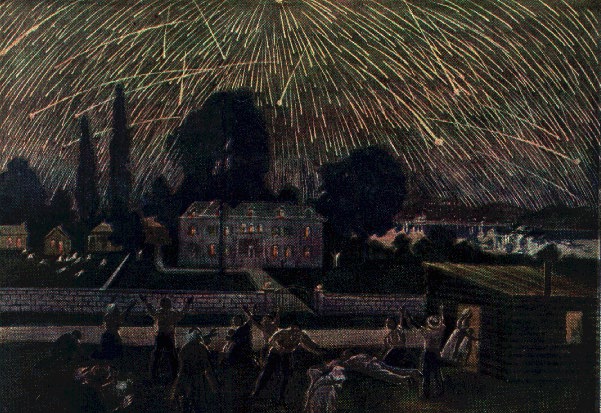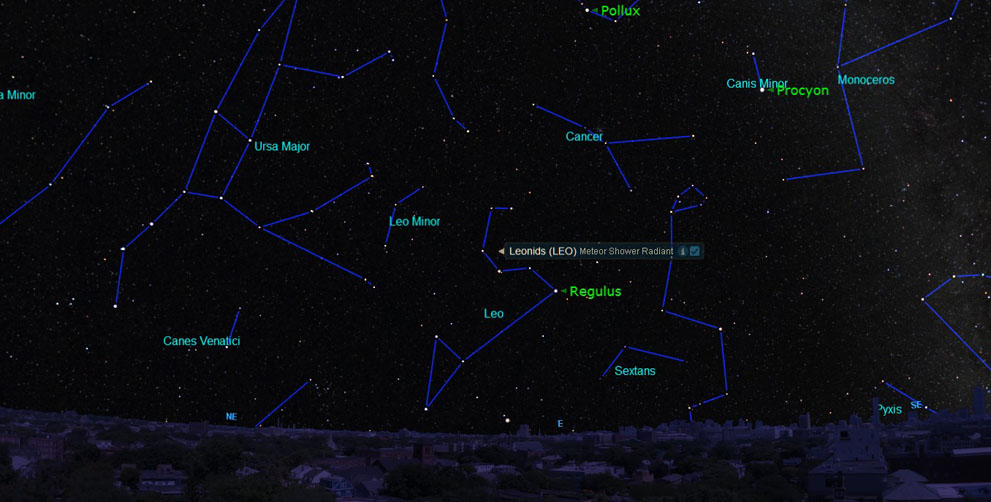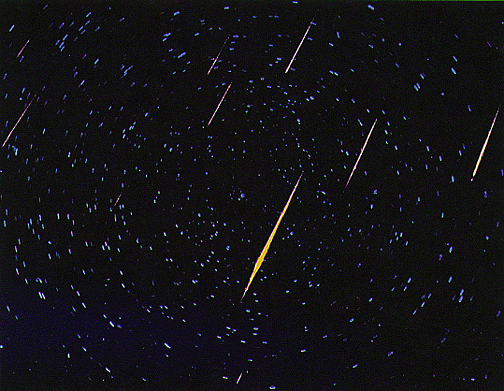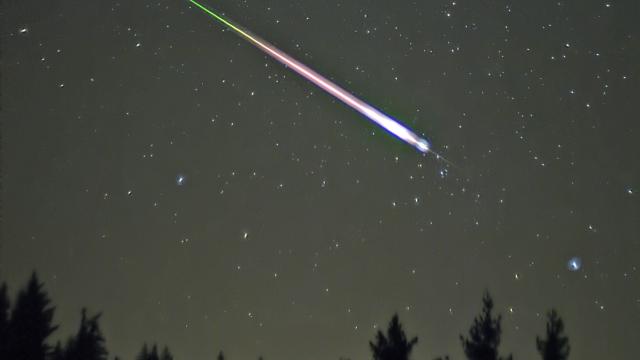The Leonids are tonight! Should you watch? Oh, yes. Here’s how, when, and why to watch the meteor shower tonight — along with something strangely colourful you may be able to spot in this year’s shower.
Editor’s Note: We’ve missed the majority of the meteor shower – peak viewing conditions were last night – but there might still be some meteors tonight.
What are the Leonids?

Top image: 2009 Leonid meteor shower / Navicore / Left Image: 1966 Leonid shower / NASA
The Leonids are a meteor shower formed by the debris of Comet Tempel Tuttel burning up gorgeously all around our atmosphere. Ordinarily, this is a fairly light shower, and this year is expected to be right along those lines with an expected rate of 15 meteoroids an hour.
Every once in approximately 33 years, though, the Leonids turns from a meteor shower to a meteor storm where the meteors falling number in the thousands — and when that happens, even the heaviest meteor showers of the year (the Perseids, the Geminids) look almost hilariously small in comparison.
Reports of historical storms can be intense — in 1966, NASA briefly reported up to ten thousand meteors at one time. Looking back in history, other intense storms also occurred, although with less warning for sky-watchers, and the art they inspired is frankly pretty apocalyptic looking:

Image: 1833 Leonids, Erik Arnesen (Oslo, Norway; 1913) via ESO
The last big storm was in 1999, so mark your calendars for 17 years from now, because it should be something to really see.
So how do I watch?
Timing-wise, 10:30pm to 5:00am should be relatively good for meteor-spotting this year — but if you’re not anxious to wait around don’t fret: Moonset should be happening just after midnight, which makes it the best time to watch, in terms of having a dark canvas.
Although the meteors are expected to be fairly sparse in this year’s shower, there’s still plenty to see. If few in numbers, the Leonids are also notably bright and extremely quick-moving, at 71km per second — faster even than the recent Orionids shower. All of this makes this shower an excellent opportunity to look for fireballs, the showiest of all meteoroids.

Image: 1998 Leonids / Yan On Sheung via NASA
How should you fireball watch? Wait for the moon to set, and then grab either a lawn chair or a blanket to lay out. It you’re going to be out for a while, so before you set out make sure you’ve got all your astronomy supplies: snacks, an extra blanket, a flask.
A good place to start looking is right between Leo and the Big Dipper, where you’ll find the meteor shower’s radiant, like so:

Image via Harvard – Smithsonian Center for Astronomy
But remember, because these meteors are so quick and bright, you’re not going to want to focus too intently on any one patch of sky. Find the radiant, but then just look up at the sky as a whole. You’re going to want to see not just the start of the meteoroid, but the full streak across the sky — plus the occasional trail of meteor smoke.
And speaking of seeing unusual things…
Uh, hey, was that meteor GREEN?
OK, so one of the interesting aspects of the Leonids meteor shower is that you often hear reports of very colourful meteors. Which colour that is, though, tends to vary wildly. Some people insist on a greenish tinge, while others claim a reddish purple or orangey-yellow.
So what’s going on? Wild imaginations? A trick of the eye? No, it’s quite real, and it has to do with the inner workings of meteoroids.

Image: 1966 Leonid shower / GSFC-NASA
There are a lot of different variables at work in colouring a meteoroid, mainly the metals in the composition and the light around them — and that’s particularly true with the composition of the Leonids. NASA explains the reasoning behind all the different colours, and why you’re seeing them, like so:
The colour of many Leonids is caused by light emitted from metal atoms from the meteoroid (blue, green, and yellow) and light emitted by atoms and molecules of the air (red). The metal atoms emit light much like in our sodium discharge lamps: sodium (Na) atoms give an orange-yellow light, iron (Fe) atoms a yellow light, magnesium (Mg) a blue-green light, ionized calcium (Ca+) atoms may add a violet hue, while molecules of atmospheric nitrogen (N2) and oxygen atoms (O) give a red light. The meteor colour depends on whether the metal atom emissions or the air plasma emissions dominate.
Of course, there are colours that tend to predominate — green seems to be an oft-noted one — but really there are all sorts of things you may see when you look up tonight.

Image: NASA/ISAS/Shinsuke Abe and Hajime Yano
